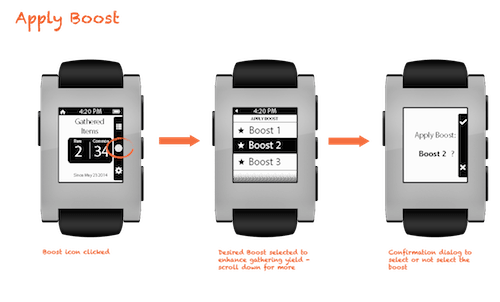The powerful technology that is available to most of us right in our pockets or bags began by enhancing and enriching our daily lives. A smartphone makes it easier to find directions to your next destination, stay on top of work e-mails, and read the news on the go. These capabilities enhance our lives by making things easier and more accessible. But as smartphones have taken over our culture, they have begun to interrupt and disturb our daily lives and the lives of the people around us. People are addicted to their devices, often becoming so engrossed in their little screen that they neglect their present. With technology becoming more and more ubiquitous, the line between enhancement and disruption is slowly disappearing. As a result, app designers must be much more aware of how a product will affect people and their way of life.
With the advent of smartwatches and wearables, the potential for disruption increases tenfold. Instead of hidden away in a pocket or a bag, the device is now attached to you and visible at all times. The challenge now is how to make the device less intrusive and less disruptive when it is sitting right there, not only in plain sight but also touching people’s bodies.
 In a recent article on Smashingmagazine.com, Jonathan Kohl writes about his own experience designing apps for smartwatches and suggests some basic tenets to keep in mind in order to continue using technology for enhancement rather than letting it slip into disruption. First, the product or app must be subtle so that the user does not have to immerse themselves in the device to complete a task or read a notification. Smartwatches take advantage of a motion many people already do in their lives: glance briefly at their wrist. This quick gesture is seen as much less rude and disruptive than pulling out a phone during a meeting or a lunch date.
In a recent article on Smashingmagazine.com, Jonathan Kohl writes about his own experience designing apps for smartwatches and suggests some basic tenets to keep in mind in order to continue using technology for enhancement rather than letting it slip into disruption. First, the product or app must be subtle so that the user does not have to immerse themselves in the device to complete a task or read a notification. Smartwatches take advantage of a motion many people already do in their lives: glance briefly at their wrist. This quick gesture is seen as much less rude and disruptive than pulling out a phone during a meeting or a lunch date.
Since the device is something people wear, one must also consider that “different parts of the body have different levels of sensitivity.” Kohl describes a negative user testing experience in which users got angry very quickly because the device buzzed too often, and it was more difficult to ignore or escape the sensation (since they were wearing the offending object). One way to tackle this issue is to use a variety of notification features (vibrate, screen glow, etc.) for different things, and to minimize the notifications to only important ones (messages from family or a boss). Customization is also important here, allowing users to not only decide what is important but also to configure the timing so they can minimize interruptions to their schedules.
Like with any new technology or device, context plays an essential role in the design process. Designers must consider when and where people are using the device in order to provide the best experiences possible. In the case of smartwatches, people use them in any and every context: walking down the street, during a meeting, in a hailstorm, etc. Kohl emphasizes the need to “test away from the development lab” in order to see how the apps perform in various conditions. For example, when moving it is much harder to read and input into a device. Testing in a variety of scenarios will make these issues more apparent.
 With such small screens, the aesthetic design of apps for smartwatches must be decidedly minimalist so that users can understand and assess the information on the screen in a single glance. Kohl’s team made the initial mistake of simply scaling down smartphone app designs to fit the smaller screen. But they soon realized that they needed to start from scratch. If a smartphone allows for 60% of the functionality of a PC, a smartwatch allows for only 20% of that functionality. Therefore, the smartwatch must match its own technical capabilities (and limitations) to provide “just the right information, at just the right time” without overreaching.
With such small screens, the aesthetic design of apps for smartwatches must be decidedly minimalist so that users can understand and assess the information on the screen in a single glance. Kohl’s team made the initial mistake of simply scaling down smartphone app designs to fit the smaller screen. But they soon realized that they needed to start from scratch. If a smartphone allows for 60% of the functionality of a PC, a smartwatch allows for only 20% of that functionality. Therefore, the smartwatch must match its own technical capabilities (and limitations) to provide “just the right information, at just the right time” without overreaching.
Instead of comparing smartwatches to the other technology we are used to using already, we must think about them as a new product with completely different capabilities. By focusing on the things smartwatches can do effectively (instead of on their shortcomings or limitations), we can utilize them productively. Kohl concludes that by making “sensible design choices, technology fades into the background, merely enhancing the here and now.”
—–
“Designing for Smartwatches and Wearables to Enhance Real-Life Experience” by Jonathan Kohl
Smart Watches, Wearables, and That Nasty Data Rash by Josh Clark
